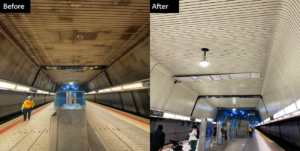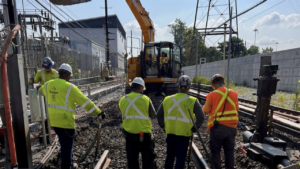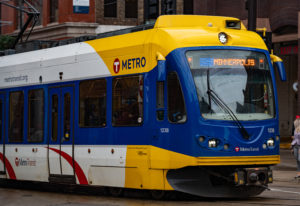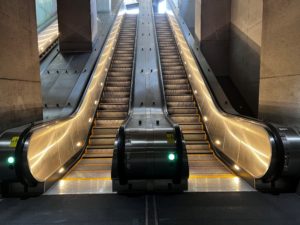San Bruno Grade Separation Project nears half-way mark
Written by Jenifer Nunez, assistant editor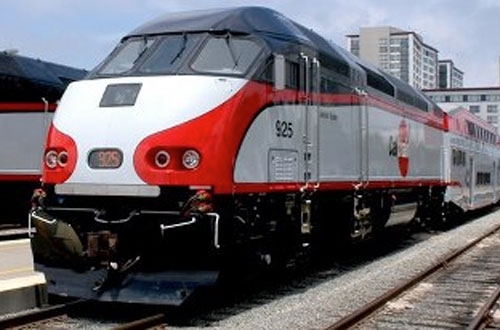
Caltrain's San Bruno Grade Separation Project, which will enhance safety at three rail crossings in downtown San Bruno, Calif., is nearing the half-way mark. The supports and bridges for the $147 million public safety project are clearly visible, giving the public a clear idea of the size and scope of the grade separation.
The project will raise the train tracks by 18 feet and lower the road by about four feet at three crossings, San Bruno, San Mateo and Angus avenues. The current station at Sylvan Avenue also will be replaced by a new station on the grade separation between San Bruno and San Mateo avenues.
There will be three pedestrian underpasses, one in the vicinity of Sylvan Avenue, one at the new station and another between Euclid Avenue and Walnut Street. Elevators will provide easy access for riders with disabilities. A total of 201 parking spaces and a “kiss and ride” for dropping off and picking up passengers will serve the station at the site of the former San Bruno Lumber.
Construction kicked off at the end of 2010 and, until recently, much of the work has been underground. A shoofly was built and utilities, including sewer, water, power and telecommunications lines were relocated. Work on a box culvert, which will increase the capacity of San Bruno’s main storm drain, is underway.
The 30-foot support structures for the project are made of reinforced concrete. They sit on steel piles that were driven into the ground at varying depths, some of which are more than 70 feet deep. The number of piles varies from 30 to 66, depending on their location. At total of 349 piles were used in the support structures.
The steel train bridges over San Bruno, San Mateo and Angus avenues were installed during three weekends in July.
The next step in the project will be to install the steel boarding platforms for the train station. Because the platforms do not support the weight of the train, they are much lighter; only one crane will be needed to put them in place and the work is expected to take less time than the bridge installations. At 800 feet, the station will be one of the longest in the Caltrain system.
The installation of the Mechanically Stabilized Earth or MSE walls will start this month. These prefabricated walls rely on the friction between the fill and the panel to hold the panels in place. Compared to reinforced concrete walls, MSE walls are easier and faster to install. MSE walls also were used in the grade separation project in Belmont and San Carlos.
The box culvert will be completed before the rainy season. The culvert will increase the capacity of the city’s existing storm drain system, which will help reduce the chance of flooding during heavy rains.
Also to be completed by fall, the shoring, piles and steel plates used for the excavation will be removed. The shoring is so close to the train tracks that the removal work must be done at night, when trains are not operating. The piles, which were installed by vibrating them into place, will be removed the same way.
Plans call for the trains to “cutover” to the new, elevated tracks next spring. After that, the shoofly will be removed and construction of the southbound platform will begin.
The entire project is scheduled to be completed by fall 2013. According to Caltrain’s most recent ridership count, more than 400 people use the San Bruno station on an average weekday. Ridership at the station has increased seven percent since 2009.
The project is funded by $85.6 million in sales tax revenues from Measure A, a voter-approved half-cent sales tax for transit and transportation projects in San Mateo County.


